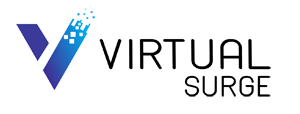How To Leverage Core Web Vitals For Better Page Ranking
Core web vitals has become a hot topic lately, with a lot of talk around the changes that it may bring to how search results are listed. Subsequently, this has also led to a lot of people wondering what they need to know about core web vitals, why they are important, and how to leverage them for better page rank in search results.
Core Web Vitals Are Becoming Crucial To Rank
Google recently announced that Core Web Vitals are going to become incorporated into the search ecosystem as ranking signals as soon as May of 2021, following an extensively published update that will also combine user experience-related signals.
The page experience signals will combine the Core Web Vitals, along with signals for mobile-friendly experience, safe-browsing environments, verified HTTPS security, and some interstitial guidelines that are thought by many to be rather intrusive.
What Are The Core Web Vitals
The Core Web Vitals are a set of three metrics that were introduced in May of 2020 and are designed to give an objective measurement of how web users experience the responsiveness, stability, and overall speed of a web page that is visited.
Largest Contentful Paint
This is a measurement of how long it takes the largest component of the main content to be displayed. This is used as a benchmark for how quickly the main content of the page loads. Ideal measurements for the largest contentful paint, or LCP, are 2.5 seconds or less, with “poor” performance being measured at 4.0 seconds or more. Scores that “need improvement” have times of 2.6 seconds to 3.9 seconds.
First Input Delay
This is the time that it takes the webpage that is loading to become minimally interactive with the user. The First Input Delay is referred to as the FID, and it is the measure of basic interactivity for the page, with “good” scores being 100ms or less, and a “poor” score being 300ms or longer. The gap from 101ms to 299ms is defined as “needs improvement”
Cumulative Layout Shift
The Cumulative Layout Shift, or CLS, is the total amount of unanticipated shifting of the layout of a page’s visual content during loading. “Good” scores are measured as 0.1 or less, with scores between 0.1 and 0.25 needing improvement, and scores of 0.25 or more being deemed “poor”.
New Labels Related To Experience In Results
Google may eventually incorporate labels in their search results that indicate sites that have Core Web Vitals that indicate a healthy web experience. They are currently conducting work on the indicators that will be used to visually identify pages that meed the “good” scores for Core Web Vitals that have been established.
The expected rollout of this is early summer 2021, right alongside their overall page experience update. Currently, there is only a portion of pages that would even qualify for the experience label or indicator, with an estimated 15% of all potential websites being coded and optimized to pass all three criteria of a Core Web Vitals assessment.
Many Site Owners Are Moving Fast
There is data to indicate that a large number of website owners have mobilized and are working intently to begin making sure their pages are optimized for the upcoming page experience indicators. The best way to ensure that websites are properly optimized is to engage with the Lighthouse suite and Page Speed insights to get an assessment of the experience metrics.
The Core Web Vitals report offered by the search console is also a crucial tool to see objective areas for possible improvement. The Google AMP is a simple and incredibly affordable way to make sure the digital experience is optimized for the upcoming changes. Google has a half-dozen ways to measure it, however.
Non-AMP Content Eligibility Changes
These changes also include the update that non-AMP pages will now be eligible for an appearance in the Top Stories feature. This will be included in the same update that includes the page experience indicators. As long as the page meets Google’s requirements and content policies for Google News will be eligible to be included in the “Top Stories Carousel”, and any pages that are eligible and meet the Core Web Vitals criteria will be given priority listing in the resulting rankings. This also means that regardless of the score, AMP content will continue to perform the same in search.
This article was originally posted at Virtual Surge.

